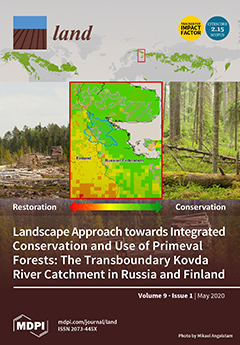Resources
Displaying 1456 - 1460 of 2258Quantification of Soil Losses along the Coastal Protected Areas in Kenya
Monitoring of improper soil erosion empowered by water is constantly adding more risk to the natural resource mitigation scenarios, especially in developing countries. The demographical pattern and the rate of growth, in addition to the impairments of the rainfall pattern, are consequently disposed to adverse environmental disturbances. The current research goal is to evaluate soil erosion triggered by water in the coastal area of Kenya on the district level, and also in protected areas.
Land Cover and Land Use Change in the US Prairie Pothole Region Using the USDA Cropland Data Layer
The Prairie Pothole Region (PPR) is a biotically important region of grassland, wetland, and cropland that traverses the Canada-US border. Significant amounts of grasslands and wetlands within the PPR have been converted to croplands in recent years due to increasing demand for biofuels. We characterized land dynamics across the US portion of the PPR (US–PPR) using the USDA Crop Data Layer (CDL) for 2006–2018. We also conducted a comparative analysis between two epochs (1998–2007 & 2008–2017) of the CDL data time series in the North Dakotan portion of the US–PPR.
Spatial Orientation Skill for Landscape Architecture Education and Professional Practice
Professional landscape architecture organizations have requested training from educational institutions based on new skills and methodologies in the curriculum development of students. Landscape architects need to visualize and evaluate the spatial relationships between the different components of the landscape using two-dimensional (2D) or three-dimensional (3D) maps and geospatial information, for which spatial orientation skills are necessary.
Maximum Fraction Images Derived from Year-Based Project for On-Board Autonomy-Vegetation (PROBA-V) Data for the Rapid Assessment of Land Use and Land Cover Areas in Mato Grosso State, Brazil
This paper presents a new approach for rapidly assessing the extent of land use and land cover (LULC) areas in Mato Grosso state, Brazil. The novel idea is the use of an annual time series of fraction images derived from the linear spectral mixing model (LSMM) instead of original bands. The LSMM was applied to the Project for On-Board Autonomy-Vegetation (PROBA-V) 100-m data composites from 2015 (~73 scenes/year, cloud-free images, in theory), generating vegetation, soil, and shade fraction images. These fraction images highlight the LULC components inside the pixels.
Old Ways, New Ways—Scaling Up from Customary Use of Plant Products to Commercial Harvest Taking a Multifunctional, Landscape Approach
Globally, the agricultural sector is facing many challenges in response to climate change, unsustainable farming practices and human population growth. Despite advances in technology and innovation in agriculture, governments around the world are recognizing a need for transformative agricultural systems that offer solutions to the interrelated issues of food security, climate change, and conservation of environmental and cultural values. Approaches to production are needed that are holistic and multisectoral.


